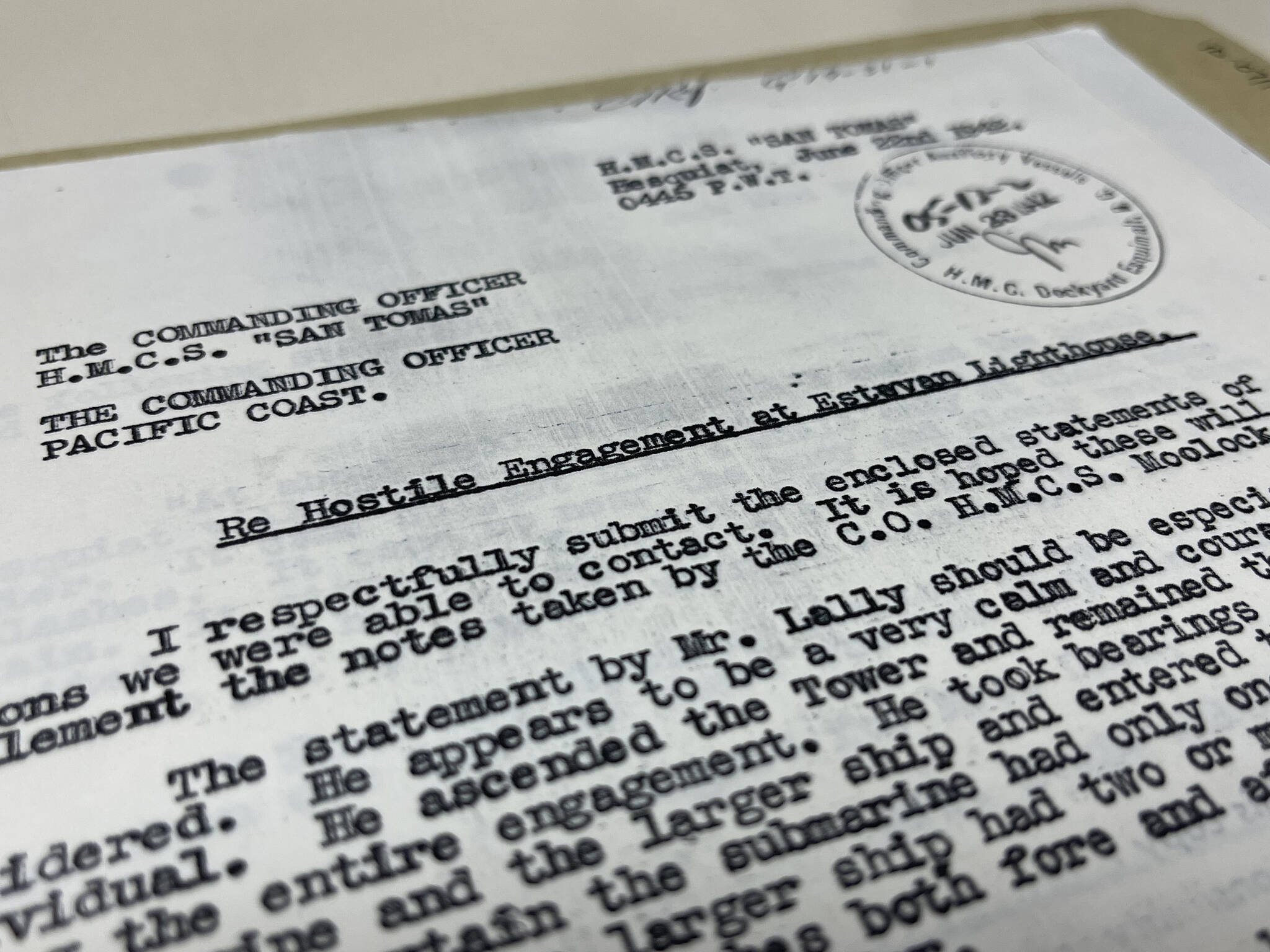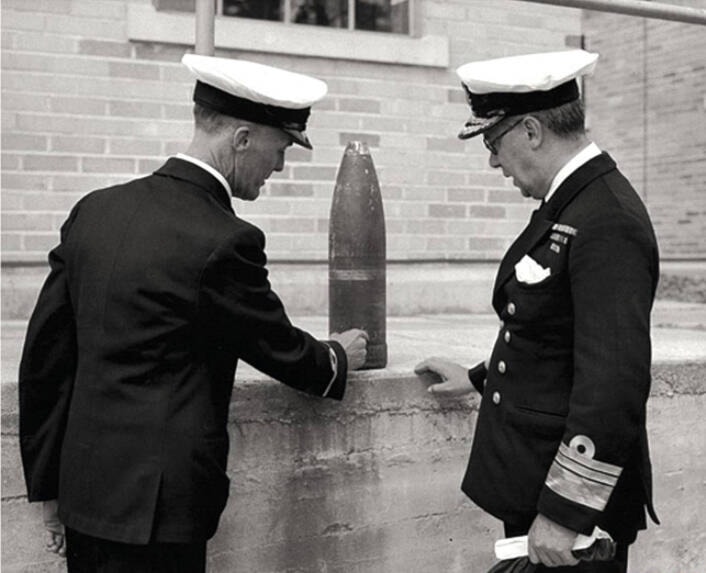“Wireless station and light at Estevan Point shelled by enemy aircraft for 40 minutes commencing at 1025 PM June 20 [1942]. No damage done except two windows cracked or broken. Station unscathed.”
With that telegraph transmission, the only Second World War attack to reach Canadian soil became reality for a remote community on Vancouver Island.
Tensions were already high on the west coast after the Japanese Navy Air Service bombed Pearl Harbor in Hawaii on Dec. 7, 1941. There was a fear that Canada’s west coast would be attacked, and that fear permeated Port Alberni too.
West coast shipyards were building ships for the navy and merchant navy, and the Royal Canadian Navy regularly patrolled British Columbia’s coastal waters, assisting the Allied war effort. Military authorities decided to build an airport to provide defence against possible attack, and Long Beach/ Tofino was chosen as a prime location.
The forced relocation of people of Japanese descent began in British Columbia; 22,000 Japanese-Canadians were forcibly moved from coastal areas of B.C. to inland internment camps. This impacted Alberni, Tofino, Ucluelet and outlying canneries, as well as the commercial fishing industry.
On June 3, 1942 a Japanese force invaded the Aleutian Islands of Attu and Kiska off the coast of Alaska, to the north of British Columbia.
Not three weeks later that conflict came to Canada’s shores.
Estevan Point lighthouse is located northwest of Tofino on the Hesquiaht Peninsula, on the west coast of Vancouver Island. While communities on the Island were under blackout conditions at night for fear of an attack, the Estevan Point Lighthouse continued to operate because of dangerous navigation threats in the area, historian Jan Peterson wrote in Twin Cities: Alberni-Port Alberni.
Estevan Point was a key radio-direction-finding station on the west coast as well as a lighthouse. Due to its remote location the population was small, but there were families living in the area and First Nations villages nearby.
Lightkeeper Mike Lally was on duty along with chief wireless operator Edward T. Redford of Port Alberni when he saw some unusual activity a few miles west of land in the Pacific Ocean. Lally was up the 30-metre tower when he saw smoke on the horizon around 9:25 p.m. on June 20, 1942.
“At 2130 (hours, or 9:30 p.m., a ship) came in sight. She was zigzagging. At 2214 she came straight for the lighthouse. At 2215 she threw in a marker which hit on a rock. Then came two geysers. Then she threw them in fast three at a time, two from the big ship and one from the little one.
“I saw the flashes. It is hard to say the distance. The submarine seemed two miles and the big ship about eight or 10 miles.”
Lally turned off the light, and the shells sailed over the lighthouse toward Hesquiaht Village. He said the shelling stopped at 2235 hours (10:30 p.m.).
There were several eyewitness accounts of the submarine attack. Mrs. Thomas Dick said she was on the beach at about 1800 hours (6 p.m.) in Hesquiaht Village when she saw something out in the water. “I saw something come up out of the water. It came up just like a whale only it didn’t make splashes,” she recounted to a crew member of the HMCS San Tomas on June 22. “It came up near the buoy and slowly went down again. It stayed up for nearly five minutes. I was very excited. It has a long top on it something like a ship. I ran to get my son but when we looked again it was gone.”
Two men fishing in a rowboat between Matlahaw Point and the buoy witnessed the shelling. C. Corbett, a truck driver, and A. Bigmore, a road worker, both from Estevan, said there were 25 or 26 shells in total.
Redford sent a “most secret” coded message to the Superintendent Dominion Government Telegraph stating “station shelled no damage remaining off the air till daylight.” Women and children from Estevan were evacuated to Port Alberni as a precaution.
Shirley Taylor, who had only been two weeks on the job as a telegraph operator in Port Alberni, received a coded message to clear all commercial messages, then received Redford’s encoded message about the shelling.
When the dust settled, it was determined Japanese submarine I-26 had shelled the isolated wire station, likely on its way back home from the Aleutian Islands.
Canadian Prime Minister Mackenzie King informed the Commons on June 22, 1942 about the attack. “It was the first attack upon Canadian soil that has been made since Confederation…It only goes to bear out what has been said so often, that no one can take too seriously both the immediacy and the extent of the danger with which all parts of the world are confronted, and at this time our own part in particular.”

